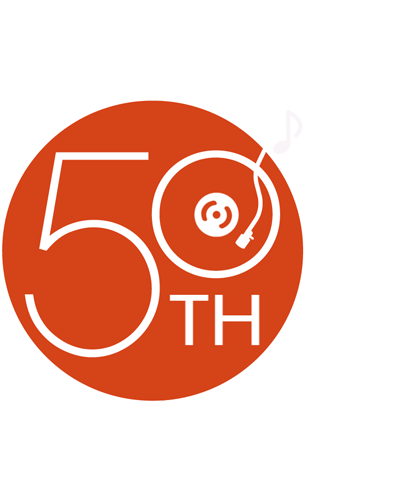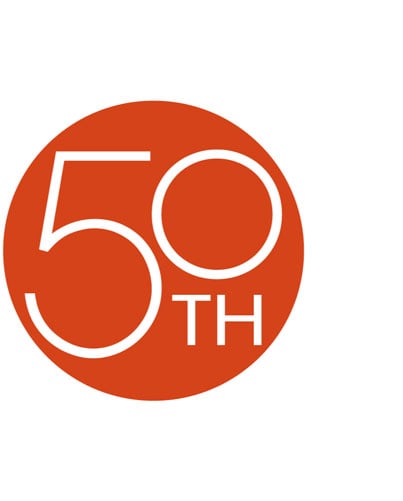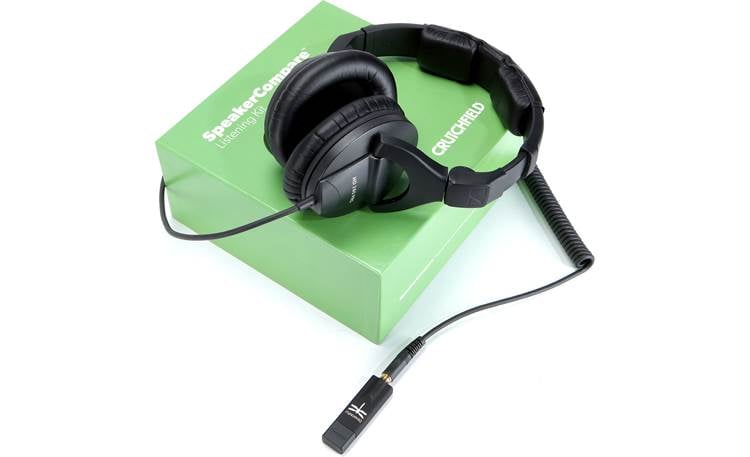How to choose the right lens for your DSLR or mirrorless camera
Create photos that you'll love sharing with friends and family
W
orking at Crutchfield is like being a big kid in an electronics candy store. And for me, cameras and lenses are undeniably my sweet tooth. Thankfully, they don't cause cavities!
My goal with this article is to help you make an informed decision as you shop for a new lens for your DSLR or mirrorless camera. I know it's easy to get overwhelmed by technical details, so we'll start with the basics and expand from there.
Why lens choice matters
We all love when our photos turn out great — that's why we bought a nice camera, right? The truth is that while your camera body is important, the lens you use often determines more about the look and feel of your images than the camera itself.
Are you ready to move beyond your kit lens?
Most of us start off with the basic "kit lens" that came with our camera. Practicing with it is a great way to learn about photography, since it can give you a good understanding of how different camera settings and focal lengths affect your images. And that's the first step toward developing your own unique style.
Kit lenses can produce great images in good lighting, but they do have some limitations. If you've spent some time getting to know your camera and kit lens and find yourself encountering frustrations, it's probably time for a lens upgrade. The good news is that even a basic step-up from your kit lens can seriously improve the quality of your photos. Now, let's dive in to what to look for.

I shot this long-exposure photo with a Canon 24-105mm zoom lens — the first "upgraded" lens I purchased for my camera.
Deciphering lens lingo
The series of letters and numbers in a lens's name might look intimidating at first, but it gives you all the information you need at a glance. Each manufacturer uses slightly different naming conventions to present the same kinds of lens specs. It'll be a lot easier to narrow down your choices if you can read and understand this info. Here are two examples that we've broken down:
| Brand | Camera series | Focal length | Maximum aperture | Image stabilization |
|---|---|---|---|---|
| Nikon | DX | 18-300mm | f/3.5-6.3 | VR |
| Canon | EF | 35mm | f/2 | IS |
While the presentation of specs on the lens barrel may vary, focal length and maximum aperture are always listed — along with any other specialized components or capabilities the lens might have.
Camera compatibility: matching brand, series, and sensor size
Of course, you want to be sure the lens you choose works properly with your camera. Staying within the same brand makes it easier, but you’ll need to understand a few basic things about your camera to find options that fit.
One of the first things you're likely to see in a lens's name is its corresponding camera series. In the top example is a Nikon DX lens, which works with the company's popular line of crop-sensor DSLR cameras. The second example is a Canon EF lens, which is primarily designed for Canon full-frame DSLRs.
Your camera's sensor size affects your choice of lenses
DSLR and mirrorless cameras are available with both full-frame and APS-C (crop-sized) image sensors. Micro Four Thirds is another crop-sensor size found in some mirrorless cameras.
Full-frame image sensors, found in higher-end DSLR and mirrorless cameras, measure 36mm x 24mm. APS-C (or "crop sensor") cameras have a smaller sensor that's 22.5mm x 15mm. Micro Four Thirds sensors are the smallest of the three at 18mm x 13.5mm.
The larger the image sensor, the more information that's recorded when you take a photo. This image sensor size chart gives you an idea of how they compare with each other:

Image sensor sizes from smallest to largest: 1. Micro Four Thirds (2x crop factor compared to full-frame), 2. APS-C (1.5x crop factor compared to full-frame), 3. Full-frame.
Crop-sensor cameras are compatible with tons of different lenses. That's great news since most of us start out using this type of camera. But having so many options can lead to a few questions — or even regrets — if you don’t know exactly what to look for. I’ll answer those questions, and explain the “crop factor” in just a moment.
Focal length
Following the lens brand and corresponding camera series, the next thing you'll usually see in the lens name is its focal length. This describes the lens's field of view — or how much it sees — and tells you whether you are looking at a wide-angle lens, a telephoto lens, or something else.
The Canon example illustrated above is a prime lens with a fixed focal length of 35mm (it doesn't zoom in or out). The Nikon is a zoom lens, with a versatile focal range of 18-300mm.
Understanding the crop factor: how sensor size affects focal length
The focal length measurements you see in a lens's name are based on 35mm film standards. If your camera has a full-frame sensor, it’s pretty straightforward — the field of view is exactly what the focal length says it is.
But if you have a crop-sensor camera, like a Canon Rebel, it’s slightly more complicated. The smaller image sensor has to “crop out” some of the scene that the lens would capture on a full-frame camera, so you’re left with a tighter, closer-up view of your subject.
Here's an example to illustrate how the crop factor works. The sunflower in the images below was shot from the same distance with the same lens. The only difference is that the wider shot on the left was taken with a full-frame camera, while the tighter shot on right was captured with a crop-sensor model. Move the slider back and forth to see the difference in perspective.


The 105mm lens used to take these photos has an effective focal length of nearly 160mm on the crop-sensor camera, resulting in a tighter shot with less background detail.
Most crop-sensor cameras have a crop factor of 1.5X (Nikon) or 1.6X (Canon), so a 50mm lens would give you an equivalent field of view of around 75mm or 80mm on an APS-C sensor camera.
This is a great advantage if you shoot sports or wildlife since you can get a tighter shot of the action without moving any closer. But if you prefer shooting expansive landscapes it has the opposite effect, since you can't capture as wide a view with a crop-sensor camera.
Bottom line: if you have an APS-C sensor camera, you'll want to keep the crop factor in mind as you shop for lenses. And be sure to look at the 35mm equivalent focal length for any lens you're considering.
Aperture
A lens's aperture determines how much light comes through it when you take a photo. How wide that opening is — how much light it lets in — is measured in "f-stops."
The f-stop number you see in a lens's name reflects its maximum aperture, or the widest it can open. A low f-stop number, like f/1.8, indicates a large opening that lets in lots of light. A higher f-stop number, like f/5.6, means that less light is coming through the lens when it's opened up all the way.

A lens's aperture, or "f number," refers to the size of the opening in the lens when you take a photo. The smaller the f number, the larger the opening.
A prime lens (non-zoom) has a fixed maximum aperture, like the 50mm Nikon shown above. Some zoom lenses offer a fixed maximum aperture as well, which means the same amount of light can come through whether the lens is zoomed in or out — a handy feature if you shoot in low light.
More affordable zoom lenses have a maximum aperture that changes as you zoom, like the Nikon example from our lens lingo chart above. It has a maximum aperture of f/3.5 at 18mm, and a maximum aperture of f/6.3 at 300mm. As it zooms in closer to a distant subject it lets in less light.
Lenses with large maximum apertures are ideal for photographing events where there isn't much light, like an evening wedding reception or an indoor birthday party.
Using aperture to control your depth of field
Lenses with large maximum apertures (low f-stop numbers) give you more control over depth of field than lenses with smaller apertures. When you want all the attention on your subject, you can blur the background by selecting a lower f-stop number. But if you want everything in focus, it’s easy to adjust to a higher f-stop setting for a smaller aperture.

The image on the left was shot at f/16, and the one on the right was shot at f/2.8. You can see how aperture affects how much of your photo is in sharp detail, and whether or not background details are blurred out.
Image stabilization
Image stabilization is one of my favorite lens features because it helps keep my images sharp even if my hands aren't completely steady. This feature does add cost to a lens, but most of us think it's worth it.
Image stabilization is especially helpful for handheld shooting with telephoto lenses, or at slower-than-ideal shutter speeds. And if you plan to shoot video with your new lens, image stabilization will make your handheld footage dramatically smoother.
You'll see image stabilization indicated in a lens name as "IS" for Canon, or "VR" (Vibration Reduction) for Nikon. Other brands have different names for this feature, but it basically works the same way in any lens that has it built-in.

Having a lens with built-in image stabilization lets me get sharp, clear photos at slower shutter speeds when I don't have my tripod handy, like this pre-dawn shot at UVA.
If you use a tripod, you don't need image stabilization — in fact you'll get sharper images with it turned off when your camera is mounted to a tripod. But certain situations make it difficult to carry a tripod, and that's when image stabilization is a real life-saver.
As a landscape photographer, I've found it immensely helpful when hand-holding my 16-35mm lens during sunrise shots. Image stabilization lets me use a slow shutter speed without experiencing image shake or blur.
Choosing the right lens type
Prime lenses vs. zoom lenses
To zoom or not to zoom? Many people have trouble making this choice when deciding on their first lens. Here's a quick breakdown of the main features of each option:
Zoom lenses
- Offer a range of focal lengths
- Can capture different looks from a single vantage point
- Versatility makes them great for travel
- Not always great in low-light

A zoom lens offers a range of perspectives, like these 24mm wide-angle and 120mm telephoto shots of Juliet.
Prime lenses
- Have a fixed focal length — no zooming capability
- Often lighter and faster than zoom lenses
- Perform well in challenging light thanks to a large maximum aperture
- Available in a range of options from wide-angle to telephoto

Prime lenses are ideal for low-light situations, like night-sky photography.
Which is best? It all depends on the situation. I think prime lenses are an excellent choice for nearly all types of photography, but I have plenty of uses for zoom lenses, too.
I especially love prime lenses for portraits, event, and nature photography because they encourage creative composition — I'm always moving around to see what unique, interesting views I can capture.
When I shoot sports for my local university, I use a 70-200mm zoom lens because I can easily adjust my focal length when the action moves closer or further away. And taking a single zoom lens with me on vacation lets me pack lightly and still get a wide range of shots.
Popular focal ranges for different types of photography
One way to narrow down your choices is to ask yourself what kind of photography you think you'll be doing the most. The needs of a landscape photographer are generally different from the needs of a portrait photographer, for example.
This chart breaks down typical focal ranges for different types of photography.
| Range | View | Best Use | |
|---|---|---|---|
| Ultra-wide angle | 14mm-24mm | creates a wide angle of view that can look distorted | architecture, events, interiors |
| Wide angle | 24mm-35mm | shows a lot of context while still looking natural | landscapes, architecture |
| Standard | 35mm-70mm | reproduces what your eye can see | street scenes, intimate settings, candids, portraits, events |
| Medium telephoto | 70mm-105mm | provides a closer, natural-looking perspective | portraits, close-ups, details |
| Telephoto | 105mm-300mm | lets you capture distant subjects and show them in context | landscape details, sports, wildlife |
| Super telephoto | 300mm-800mm | lets you get detailed images of distant subjects | birding, wildlife, sports |
Now, let's take a more in-depth look at the most common types of lenses. And then I'll touch on a few of the more specialized options.
Wide-angle lenses
A wide-angle lens has a focal length of 35mm or less. They're called "wide angle" because they capture a broader view of a scene than what the human eye sees.
Wide-angle lenses are great for showing the vastness of a location, like landscapes or sweeping views of a city. They're also great for getting shots in tight spaces, like group photos in small rooms.

Wide-angle lenses are a popular choice for night sky photographers, since they capture expansive views of the stars.
Wide-angle lenses are also great for getting super close to your subject. I shot this photo while holding my camera right beside the Ferrari's wheel. The close proximity helps emphasize the tire while still allowing me to get the entire car in the shot.

Wide-angle lenses let you get close to your subject for unique perspectives and compositions.
It's worth noting that because wide-angle lenses can distort close-up subjects, they aren't the best choice for portraiture or headshots. A longer focal length is almost always preferred in those cases.
I love 85mm, 100mm, and 200mm focal lengths for portraits because of their flattering compression. These longer focal lengths allow me to stay at a relaxed distance from my subject, which means I don't have to have my camera and lens close to their face.

An ideal focal range for portraits is between 85mm and 200mm.
"Standard" lenses
Standard lenses cover the 35mm to 70mm range, and offer the closest field of view to what you see with your eyes, which is about 50mm. They're terrific for nearly all types of photography, and make great "walk-around" lenses. I use my 24-70mm lens for parties, wandering through the woods, and snapping pictures when I'm on vacation.

A standard lens offers a field of view similar to what you see with your eyes. Side note: making nature photos black and white can add a pop of visual interest to your composition.
Telephoto lenses
A telephoto lens can have a focal length of anywhere from 70mm all the way up to a staggering 800mm. These longer lenses let you close in on subjects that are far away.
Long telephoto lenses are ideal for sports and wildlife photography, while shorter telephoto lenses are great for portraits. Telephotos also generally work well for close-up shots at events like concerts, weddings, or graduation ceremonies.

A telephoto lens lets you capture action at a distance, like this shot of the moon during the 2017 solar eclipse.
Unless you have a specific focal length in mind, a telephoto zoom lens is a better choice than a telephoto prime lens for most folks, since its range of focal lengths lets you easily choose the right one for your subject or scene.
Telephoto prime lenses are fairly specialized, but offer superb optics. For example, I use a 200mm prime lens when I'm shooting football games and want terrific action shots from the sideline.

A telephoto lens compresses the background behind your image to provide extra emphasis on your subject.
Specialty lenses
Macro lenses
A macro lens lets you get really close to a small subject — most of the time mere inches away. They generally have a magnification ratio of 1:1 or higher, and almost always come in fixed focal lengths (prime lenses). These specialty lenses carry a heftier price tag, but they can also pull double duty as exceptional portrait lenses.

A macro lens lets you take super-detailed photos of tiny subjects.
If you're interested in capturing more unique views of the world, consider a fisheye lens or tilt shift lens. You likely won't find them practical for day-to-day photography, but they can provide creative opportunities that may not otherwise be available.
Have fun exploring your creativity
I believe that taking great photos — and having fun while doing it — doesn't require having expensive gear or deep technical knowledge. So no matter what new lens you choose, if you have a sense of adventure and curiosity you can have a blast capturing moments that you'll enjoy revisiting and sharing with others.
Every photo featured in this article was taken by a Crutchfield employee. We love exploring the world with our cameras in hand, and highly encourage you to do so as well! The more you challenge yourself to look for something new, the more rewarding your images will be. As a bonus, your technical skills will develop naturally along the way.

No matter what lens you choose, you'll have a fun new way to view the world.
Jump into the conversation
Have a question about what lens to get, or what settings are best? I love talking about this stuff. Leave me a comment below, and let's get the conversation going! And of course, you can always give us a shout for free expert help choosing your next lens.










Dr. John Sims from Moline IL
Posted on 2/24/2023
Been taking pictures since age 6. Have worked as a pro with: 1 type Pentax, 3 types Nikon, 1 type Sony, 3 types Leica, 1 Twin Lens Rolliflex, 1 RB-67. 1 type Hasselblad. As a former Sinar Factory Rep. I told everyone who askd You can place a 5K Leica lens on a shoe box and can get a 5K picture. Place a $500 lens on a $10,000 Leica camera, all you will get is a $500 pic. Now retired I sold off all my Nikon gear & went with the above best. $30,000 in Leica SL-2 & 2 zooms + Q-2.
Drew from Pierre Part
Posted on 1/14/2023
I am a pretty seasoned armature photographer, with many great landscape and wildlife photos over the last 30 years, one of which made a National Geographic coffee table publication. I now want to try photographing the night sky. My current lenses are an 18 to 300 that stays on my camera and a 200 to 500mm telephoto rarely used, with a lowest f stop of 3.5. I just spent 3 days in a very clear night sky in the southwest and totally failed at getting any good results. My go to camera is a Nikon 5200. What do you suggest for a night sky lens?
Deia Z. from Crutchfield
on 1/16/2023
David Joseph Cook from Angier
Posted on 11/30/2022
Will a 35MM setting on a 24-70mm focal length lens give you the same image and quality of a 35MM prime lens?
Deia Z. from Crutchfield
on 1/16/2023
Carol Hayman from Prescott AZ
Posted on 11/7/2022
Excellent article! Excellent!!! Thank you!
Barb Zwick from Owego
Posted on 1/24/2022
I received my first camera Nikon D3500 as a gift recently. I have never explored the world of photography, but am so very excited to get started. I received the "kit" and am trying to learn what the buttons do or don't do, where to stand, where the light should or shouldn't be, etc. Excitement overload! I appreciated reading the descriptions of what the lenses are used for, when and why. So much to learn! Thank you so much for this valuable information as I start my journey. Retirement days are upon me and I'm looking forward to seeing the world behind my lens!
Kramer Crane from Crutchfield
on 1/26/2022
George Muller from Coquitlam
Posted on 12/13/2021
i am looking to buy a new 3 o 400 mm lens to upgrade from a kit lens. i am keeping my t7 rebel as the budget rules. namely my wife. can u suggest a good replacement. i take a lot of wildlife pictures. however i have taken some courses online and am learning to photograph food, portraits and landscapes. i want to become a complete photographer so will learn using my t7 rebel. but i know a higher quality lenses does help.
Kramer Crane from Crutchfield
on 12/13/2021
RJ from Salem, OR
Posted on 11/18/2021
Great article. As someone with a brain injury it helped make some things clearer that I was having a hard time understanding. I am wanting to get a Canon R3 and would like to have lenses for any and all types of photography. Mostly just for fun, but I am sure I will be asked to do some weddings. What lenses would you suggest to have in my kit? Thank you.
Kramer Crane from Crutchfield
on 11/19/2021
Jay Gilfillan from Camano Island
Posted on 11/6/2021
Great article. I just made the move to full frame. You helped clear up a few of my questions. Thanks.
Kramer Crane from Crutchfield
on 11/8/2021
Cathy Dillard from Mills River, NC
Posted on 10/30/2021
I love your articles educating the world on camera usage and techniques. I have read and re-read them to help me with my camera hobby. Thank you!
Kramer Crane from Crutchfield
on 11/2/2021
Amanda L
Posted on 7/4/2021
Hi, I have a canon ti rebel 7 and want to get a good lens for sports action shots and also for portraits. Is this an okay camera base or would you recommend something else. Would love to transition from amateur to professional in the near future.
Kramer Crane from Crutchfield
on 7/9/2021
I highly recommend that your next lens is the Canon EF 85mm f/1.8 USM. It will give you gorgeous portraits, plus excellent action shots from a distance. And, you can use this lens with any of Canon's full-frame DSLR or mirrorless cameras if you decide to upgrade your body down the road.